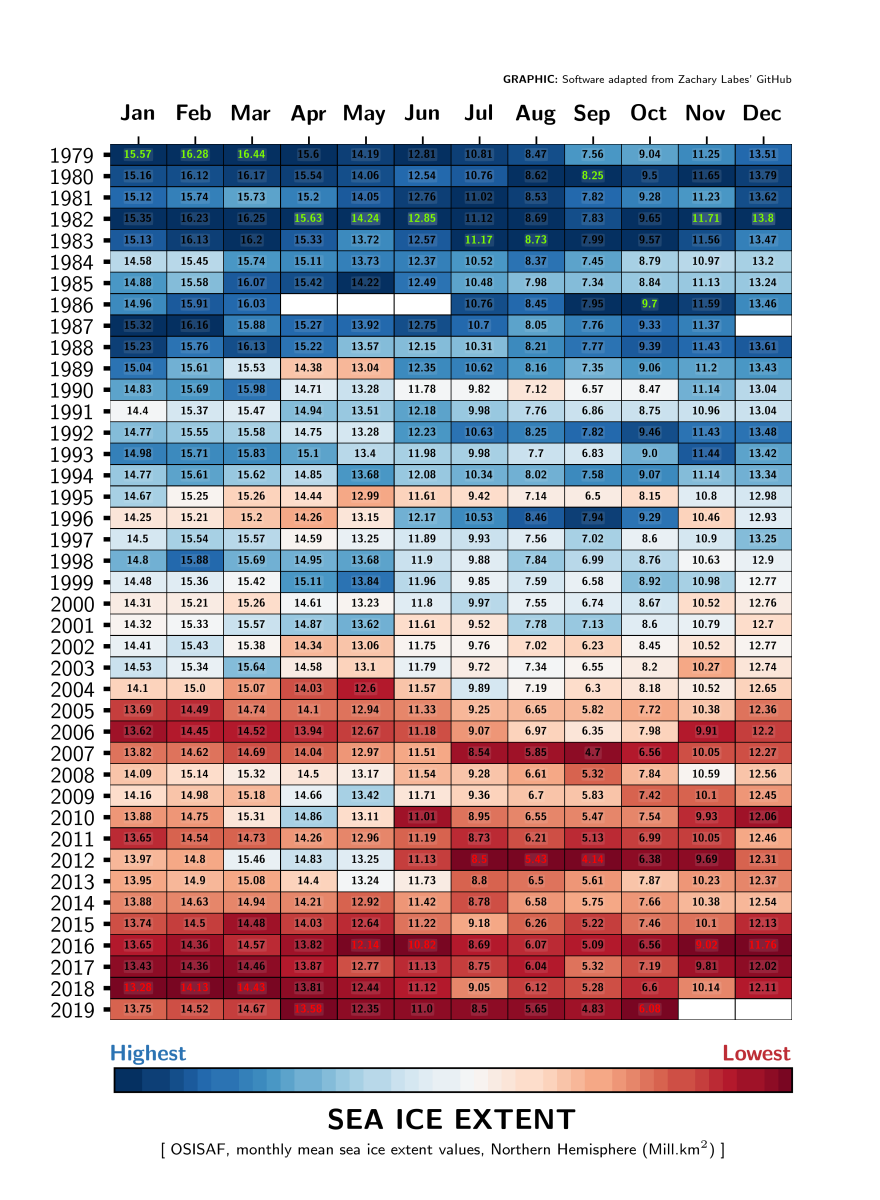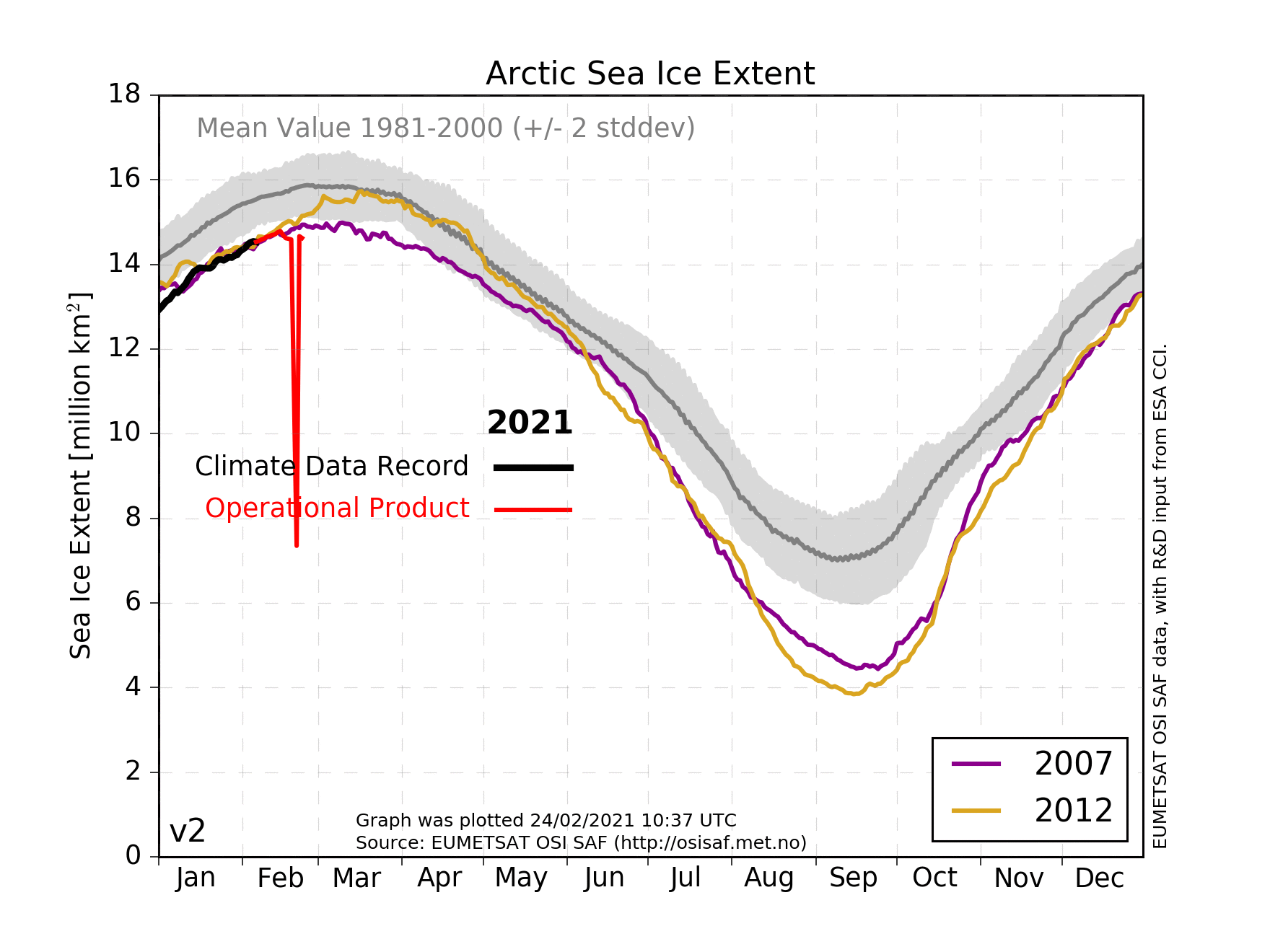October 2019 sets a new record low for October mean sea-ice extent in the Arctic, thereby joining April 2019 as new record holders from this year, and with the May to August all being second-lowest for their months.

The figure above shows the monthly mean sea-ice extent for the Arctic, from 1979 to today. The number in each cell refers to the sea-ice covered area in million km2. The color of the cell refers to below (red) or above (blue) the average value over the 41 years long satellite data record. Numbers marked with red or green point out the year of record low or record high ice extent.
All monthly record lows have been set within the most recent 8 years. The year 2019 is a year that can be characterized as early onset for ice melt and late freeze up. This is also demonstrated by the seasonal curves below.

Daily sea-ice extent data are processed at the EUMETSAT OSI SAF.
The sea regions north of Siberia and Alaska have the greatest reductions in sea-ice cover. The map below shows the ice concentration anomaly for October 2019 relative to the mean October value for the reference period 1981-2000. Purple color indicates areas where the ice concentration this October has been at least 20% less than for the reference period. The narrow green belt in the Fram Strait is the only area where this year's October ice concentration was more than 20% above the reference period.


